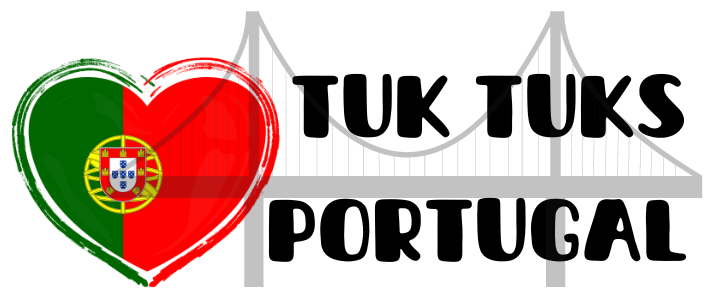Porto’s Dom Luís I Bridge: A Spectacular Ironwork Icon
The Dom Luís I Bridge in Porto is a magnificent ironwork icon that stands as a testament to the city’s rich history and architectural marvels. With its impressive design and breathtaking views, it has become a symbol of Porto and a must-visit attraction for tourists from around the world.
Introduction
The Dom Luís I Bridge, also known as Ponte Dom Luís I, is a double-deck metal arch bridge that spans the Douro River in Porto, Portugal. It connects the city center with the Vila Nova de Gaia district and serves as a vital transportation link between the two areas. The bridge is not only a functional infrastructure but also an architectural masterpiece that attracts visitors with its stunning beauty.
History of the Dom Luís I Bridge
Construction Period
The construction of the Dom Luís I Bridge began in 1881 and was completed in 1886. It was designed by the Belgian engineer Théophile Seyrig, a collaborator of Gustave Eiffel, who was responsible for the iconic Eiffel Tower in Paris. The bridge was a response to the growing need for a reliable and efficient transportation system to connect Porto and Vila Nova de Gaia.
Inauguration and Early Years
The Dom Luís I Bridge was inaugurated on October 31, 1886. At the time, it was the longest iron arch bridge in the world, spanning a total length of 385 meters. Its construction was a remarkable engineering achievement, showcasing the advancements in ironwork technology of the era.
Design and Architecture of the Dom Luís I Bridge
Architect and Engineering
The Dom Luís I Bridge was designed by Théophile Seyrig, who drew inspiration from the renowned Eiffel Tower. The bridge features two levels, with the upper level serving as a pedestrian walkway and the lower level accommodating vehicular traffic, including trams. The bridge’s design is a combination of both function and aesthetics, blending seamlessly into the surrounding landscape.
Materials and Structure
The bridge is primarily constructed using iron, with its arches made of wrought iron. The use of iron allowed for a lightweight yet strong structure, capable of withstanding the weight of vehicles and the forces exerted by the river. The bridge’s deck is made of a wooden platform, adding a touch of warmth to the overall appearance of the structure.
Innovative Techniques
The construction of the Dom Luís I Bridge utilized innovative techniques of the time, including the use of cantilevers and falsework to support the arches during construction. These methods allowed for the efficient and safe construction of the bridge, showcasing the engineering prowess of the era.
Major Events and Changes in the Bridge’s History
Renovations and Modernizations
Over the years, the Dom Luís I Bridge has undergone several renovations and modernizations to ensure its continued functionality and safety. In 1991, the upper level of the bridge was closed to vehicular traffic and transformed into a pedestrian-only walkway, providing an even better experience for visitors. These renovations have helped preserve the bridge’s historical significance while adapting to the needs of the modern world.
Relevance in Cultural Events
The Dom Luís I Bridge has become an iconic symbol of Porto and is often featured in cultural events and celebrations. It has been a backdrop for numerous festivals, fireworks displays, and even music concerts. The bridge’s grandeur and unique design make it a popular choice for event organizers to create memorable experiences for both locals and tourists.
Tourism and the Dom Luís I Bridge
Viewpoints and Photo Opportunities
One of the main attractions of the Dom Luís I Bridge is the spectacular views it offers. From the upper level pedestrian walkway, visitors can enjoy panoramic views of the Douro River, Porto’s historic Ribeira district, and the city’s skyline. The bridge itself is also a magnificent sight to behold, with its intricate ironwork and architectural details providing endless photo opportunities.
Activities and Attractions Nearby
Adjacent to the Dom Luís I Bridge, the Ribeira district offers a plethora of activities and attractions for visitors. From exploring the narrow streets lined with colorful buildings to dining at traditional Portuguese restaurants, there is something for everyone. Additionally, the bridge’s proximity to the famous Port wine cellars in Vila Nova de Gaia makes it a convenient starting point for wine enthusiasts looking to experience the region’s renowned wine culture.
Prominence on Social Media
The Dom Luís I Bridge has gained significant prominence on social media platforms, with countless travelers sharing their awe-inspiring experiences and stunning photographs. The bridge’s unique design and picturesque location make it a favorite subject for photographers and Instagram enthusiasts. The hashtag #DomLuisIBridge has gained popularity, allowing people to explore the bridge virtually and discover the beauty of Porto.
Conclusion
The Dom Luís I Bridge is a true masterpiece of ironwork and a symbol of Porto’s rich history and architectural achievements. Its elegant design, innovative engineering, and breathtaking views make it an unforgettable experience for visitors. Whether crossing the bridge, capturing photos, or simply admiring its beauty from afar, the Dom Luís I Bridge is a must-see attraction that showcases the grandeur of Porto’s architectural heritage.
